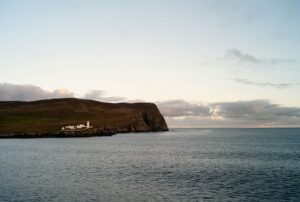World Environment Day: Welsh quarry reclaimed by nature gives us hope
Closed in 1952, a former site of heavy industry is now rich in biodiversity, proving the planet’s incredible resilience and ability to recover.

I’ve recently discovered an abandoned sandstone quarry near Ruabon in North Wales, and it brought to light the impact industry such as mining has on our environment, but also, the power and speed of nature’s ability to recover.
The quarry represents the ‘old way’ of doing things, which is very pertinent to our current situation with regard to the climate crisis and biodiversity collapse. This quarry closed in 1952, and while in operation it supplied stone to North Wales, Lancashire and Cheshire.
This would have been laboriously dug out using some mechanical equipment but probably a lot of hard manual labour as well, at a time when mining operations were often smaller but their impact on the landscape was less considered.
The site has now had more than seventy years to recover from its industrial use, and it has recovered incredibly. Beautiful mature trees enclose the spaces and wrap gnarled roots around the steep slopes to steady themselves. Mosses and ferns carpet the ground, including impressively sized Male Ferns (Dryopteris affinis), Harts Tongue Fern (Asplenium scolopendrium) and Broad Buckler Fern (Dryopteris dilatata). Liverworts creep along the old stone walls and powdery lichens almost look like nature’s graffiti.
An impressive carpet of Wild Garlic (Allium ursinum) spreads as far as the eye can see in every direction in April and May (there is some evidence that it is called ursinum because bears love to eat it, and when there were bears in Britain ages ago they may have controlled the spread of the plant with their digging).



And the birds… there has been documentation of jays, spotted flycatchers, pied flycatchers, little owls, tawny owls, great spotted woodpeckers, nuthatches, dippers, pheasants, grey wagtails, wrens, robins, great tits, blue tits and long-tailed tits at the site, along with regular customers such as rooks, crows and magpies.
Nature has re-established itself in the old quarry and it is now wonderful and ecologically diverse. This, in my mind, is an important lesson in working with nature to let it find its own path in the diversification and repair of our landscapes.
As human beings, we are quick to impose our ideas on a space, but perhaps we should relinquish control as nature has the power to create planting palettes and habitats that are infinitely more diverse than our hands are capable of.
Claudia Frost has over over 25 years of experience in planning and design, master planning, urban design, regeneration, and biodiversity strategies. She is currently associate Landscape Architect at Land Studio, a team of landscape architects, engineers and ecologists creating holistic solutions for clients including the National Trust, landowners and private estates.















